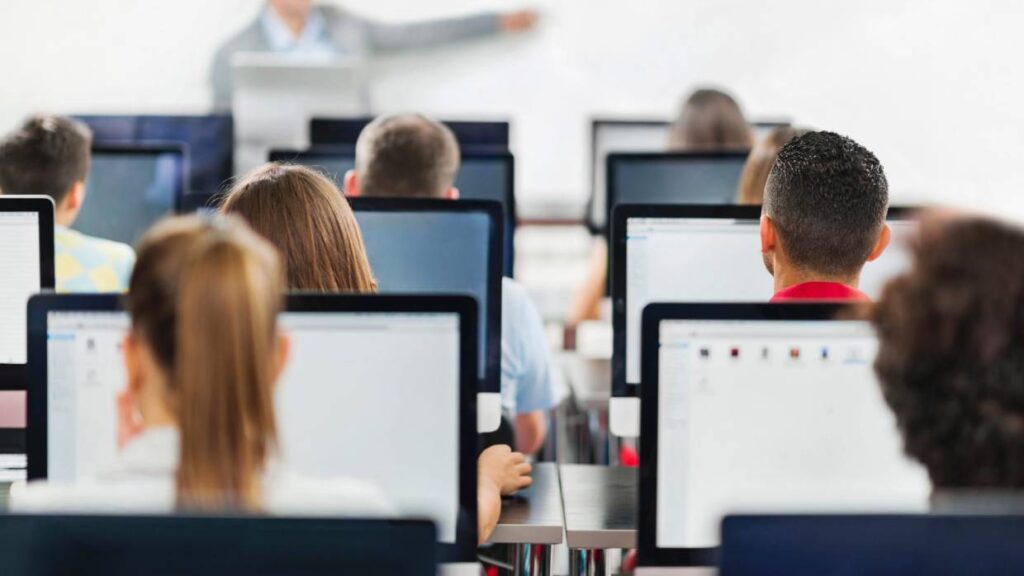Technology has had a significant impact on education in recent years. Our classrooms and approach to learning have drastically changed due to technological progress. Plus, currently, there is a whole technological branch working just for educational purposes alone. These developers and scientists explore how we can improve and upgrade our approach to education based on the demand of the modern market.
All these changes are fascinating to observe and witness firsthand. The transformation aims at creating a more open, inclusive, fun, and efficient learning process. Here are some ways in which technology is changing education at this very moment.


Table Of Contents
Access to information
The Internet has provided students and educators with access to a vast amount of information at any moment, day or night. Now people can easily search for information on any topic, discover valuable data, or complete research using various online sources, from news articles to online encyclopedias, e-books, videos, and other educational materials. People can even find all kinds of information in various languages or access archives and ancient texts in their digital forms.
Access to such limitless information is definitely something new for people in education. It has given teachers a chance to elaborate their class programs, extend their range of knowledge, and find new resources for teaching students.
Distance learning
In the past, students could study only inside their classrooms or at home with tutors. Now, learners can study from anywhere in the world as long as they have Internet access and a computer. Distance learning programs and online courses have truly revolutionized education as we know it.
Now, formal and informal education has become much more accessible than they used to be in the past. People can learn regardless of their financial situations, physical restrictions, geographic constraints, etc. People can even take online courses from the most respectable universities without paying any tuition.
Personalized learning
Technology can enhance teachers’ work and improve their cooperation with each of their students. How? Well, these days, many learners and educators experience tech-inspired personalized learning approaches. Thus, technology can customize lessons and programs based on students’ needs, progress, learning strengths, and weaknesses.
Such customization allows for the creation of more adaptive and efficient learning experiences. Students learn better as they pace and learning methods are incorporated into the new program. Plus, they can receive personalized feedback explaining exactly where they do well and where they need to work harder. This way, students get to learn more about themselves, their best learning approaches, and how to work smarter, not harder.
Of course, in the past, teachers tried to do the same for their students. However, educators often have hundreds of students, which takes a lot of time. Software may take up to several seconds to analyze students’ learning progress and provide further recommendations.
Collaboration
School teamwork has never been so easy. Now students can collaborate and complete projects together even being miles apart. Indeed, multiple programs and tools have allowed students to collaborate in real time from the comforts of their homes.
Also, now, students don’t have to find the time which fits everyone’s schedule. Every person can complete their task for the project and share the work online for others to evaluate and add more information. Programs like Evernote, Google Docs, Slack, and many others have become highly productive platforms for all school teamwork.
Students can also get professional assistance online whenever they need help. Thus, anyone can find and read a writepaperfor.me review and contact professional writers, asking for help with their writing assignments.
Interactive learning
Finally, today students can enjoy a wide variety of interactive learning experiences. Many technological advances can create fun and immersive classes. For instance, educators can use virtual and augmented reality technologies to create real-world environment simulations. Thus, students get to explore theories and ideas they learn in a more engaging and memorable way.
Moreover, having fun during lessons has been proven to encourage students to understand and retain information better. Hence, having unusual types of lessons and additional tools for delivering messages stimulates students’ curiosity and drive for learning. Teachers can also use various forms of media, like songs and videos, to enhance students’ engagement in the lesson.
In addition, students can also engage in mobile learning, whether alone or in classrooms. Such learning comes from applications, games, and other educational programs. Students can have instant access to their learning resources. Mobile learning also aims to provide interactive and fun experiences, stimulating students to stay in the process for longer and return every day.
Bottom line
Overall, technology has changed how we view and approach education. Students and educators now have to keep up with the times and utilize all these powerful tools, resources, and devices to enhance the learning processes and make classrooms more fun and effective. Also, it is fair to predict that it is only the beginning of the transformational journey, as there is still so much to do and adapt to the new technological realities.
